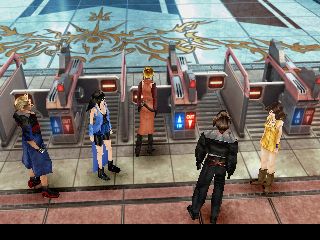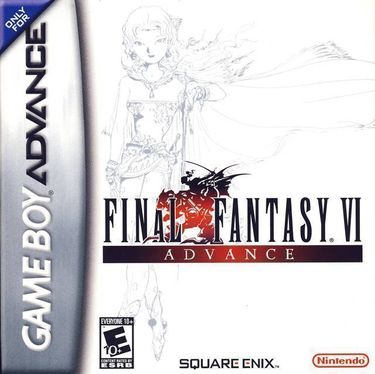

Armor directly affects the vitality statistic, which will in turn affect the amount of health gained when leveling up. In addition to weapons, each has four types of armor that can be equipped for defense, which can be purchased at armor shops or found in chests scattered throughout the game. Unlike materia, they cannot be swapped or replaced, and have unlimited usage. Weapons follow the same principle as materia in terms of attack power, gaining experience and levelling up. Characters can swap materia among themselves, with unequipped materia being used mid-battle for such things as healing party members, compensating for the limited amount of healing items. Like party members, materia gain experience when used, and can be leveled up to a maximum level of nine. Materia have a limited number of uses before they must be recharged at one of the game's magic shops. Winning battles may reward the player money (Gil) and items.Įach character brings one materia into the party when they join, carrying one spell that can be used in combat. When characters "level up", the statistics for their attributes increase permanently, which can also be amplified by the types of equipment the character is wearing. Character statistics are driven by experience-players are awarded "experience points" for winning battles, which accumulate until characters gain "experience levels". If one of the party members successfully flee, the battle also ends.Ī character's performance in battle is determined by numerical values for categories such as speed, strength, and magical power. Combat ends when the player either defeats all enemies and the game returns to the area map, or all party members are defeated in which case the game ends and returns to the title screen. All characters can physically attack the enemy, use spells from equipped materia, or use an item in one turn.

On this, the enemy appears opposite to the three characters in the party each battle uses a turn-based battle system similar to that featured in Final Fantasy III. Whenever the protagonist encounters an enemy, the map changes to the "battle screen".

As in other Final Fantasy-related games, travel across the world map screen and hostile areas is frequently interrupted by random enemy encounters. To overcome this, players can ride emu-like chocobos and various vehicles available to them, though usage is limited. Players can freely navigate the world map screen unless restricted by geographical obstacles, such as water or mountains. Starting from the second act, players can journey between field screen locations via the world map, a downsized representation of Final Fantasy VII's world. Players can save their game at any time when not in combat to the game's single save slot for later playing. Most of Final Fantasy VII occurs within the city of Midgar for the first act, later expanding to towns, dungeons, caves, and similar areas for the rest of the game. In Final Fantasy VII, the player directs the protagonist throughout the game world with a group of three interchangeable party members, exploring areas and interacting with non-player characters. The game was received with mixed reception, cited as an impressive achievement but at the same time criticized for its difficulty and choice of a target console. The items, spells and equipment available to the player are based upon those in the original game, and although a large number have been omitted along with optional characters and some side quests, the original story was reproduced in very minute detail. The game features many gameplay elements of the original Final Fantasy VII, including a three-member party structure and adaptations of the game's subsystems. The cartridge itself, as with other Nanjing releases, is structurally different from licensed Famicom cartridges in terms of hardware and programming. for clones of Nintendo's Famicom console. The two-dimensional "port" was developed and published by the Chinese company Shenzhen Nanjing Technology Co., Ltd. Final Fantasy VII (simplified Chinese: 最终幻想7 traditional Chinese: 最終幻想7 pinyin: Zuì Zhōng Huàn Xiǎng 7) is a Chinese unofficial, unlicensed remake of the 1997 console role playing game Final Fantasy VII, originally developed by Square for the PlayStation.


 0 kommentar(er)
0 kommentar(er)
